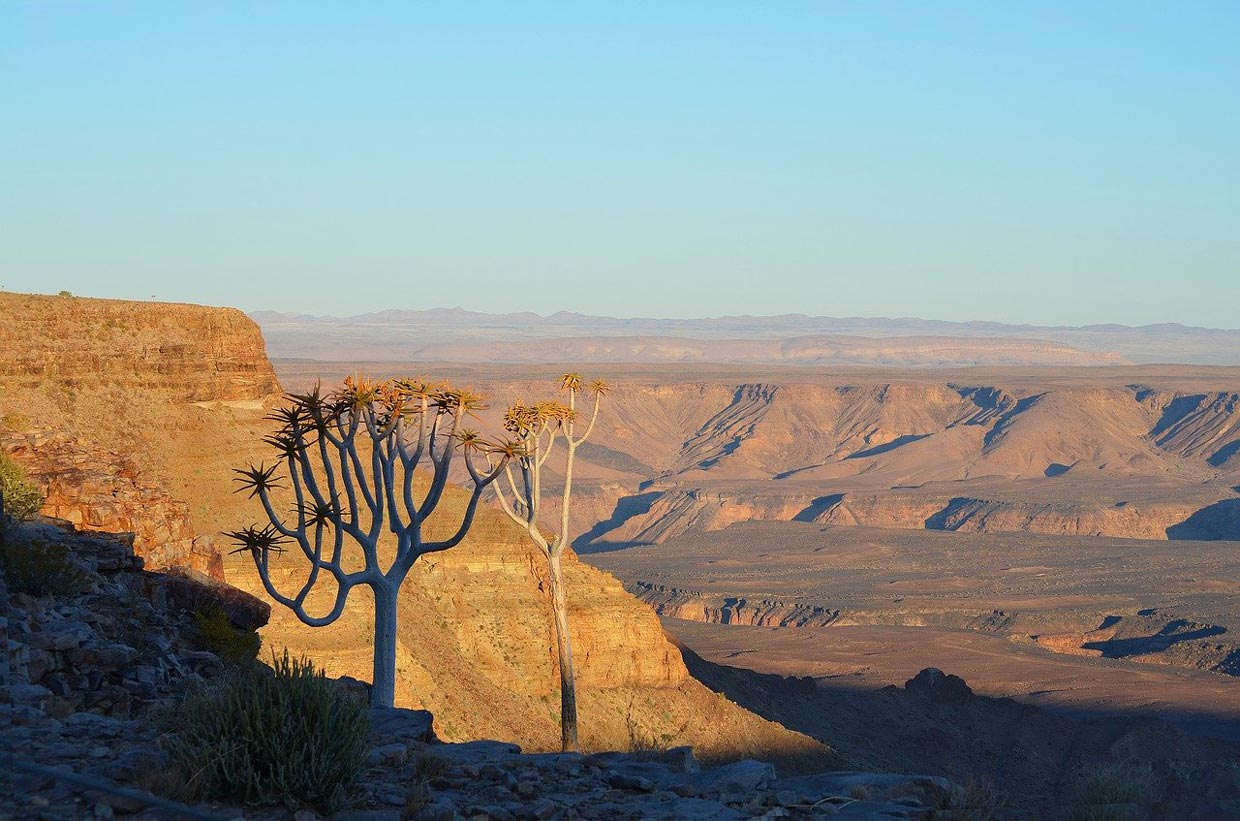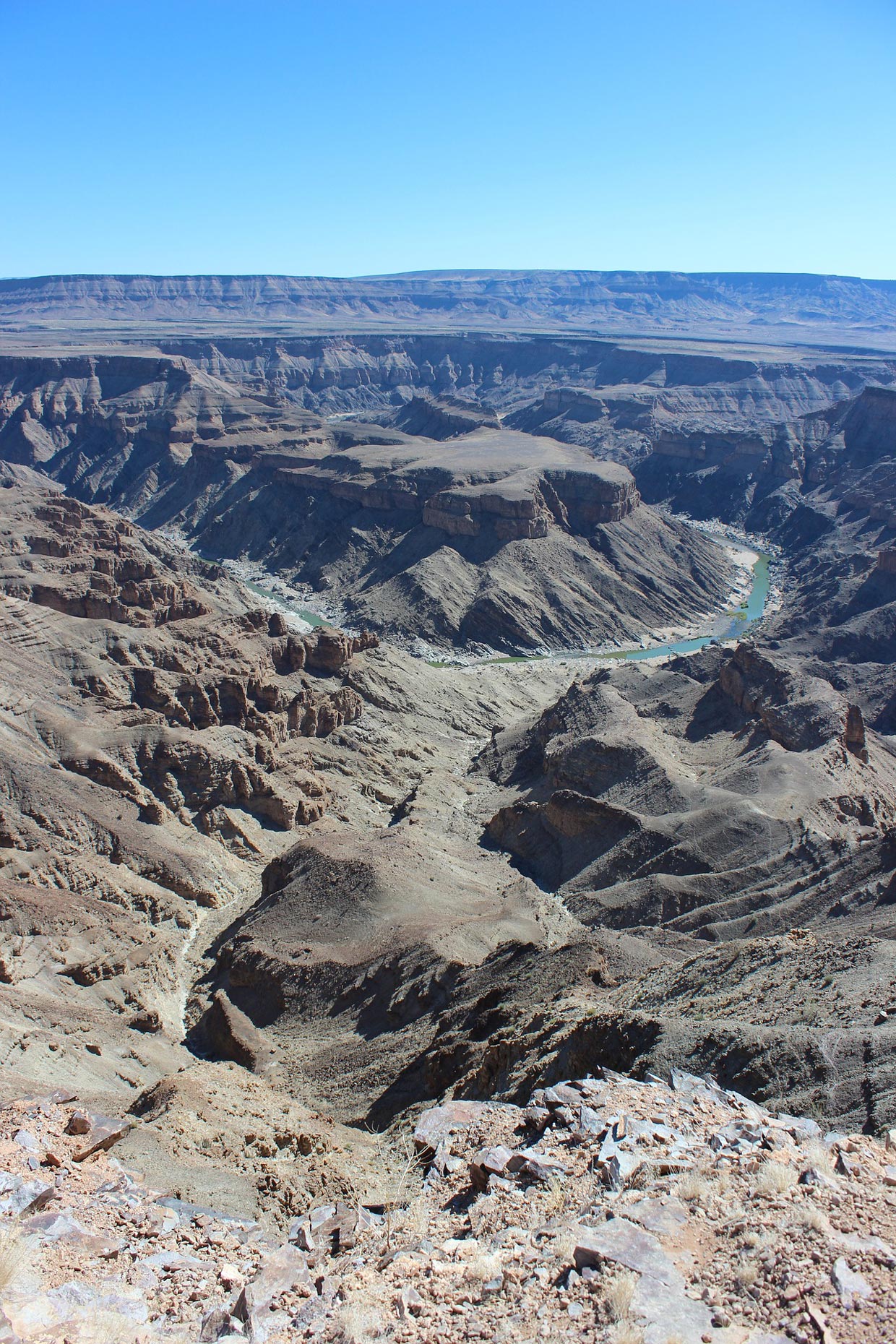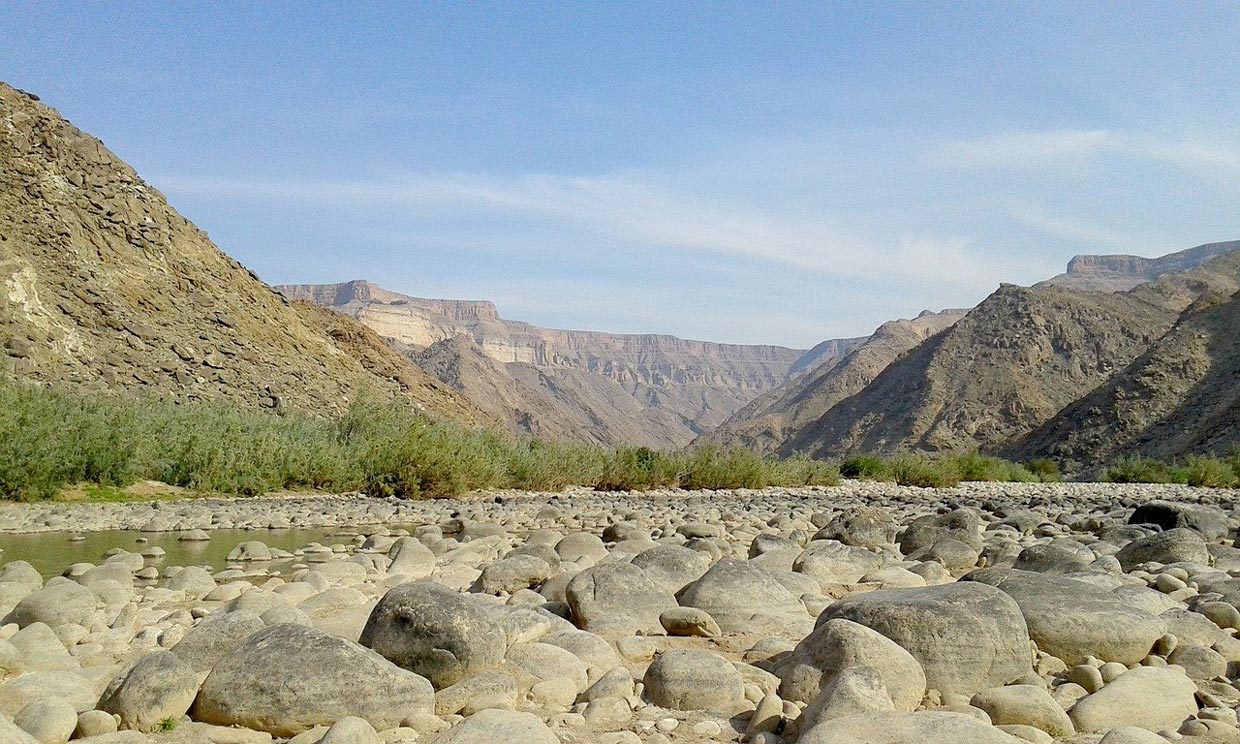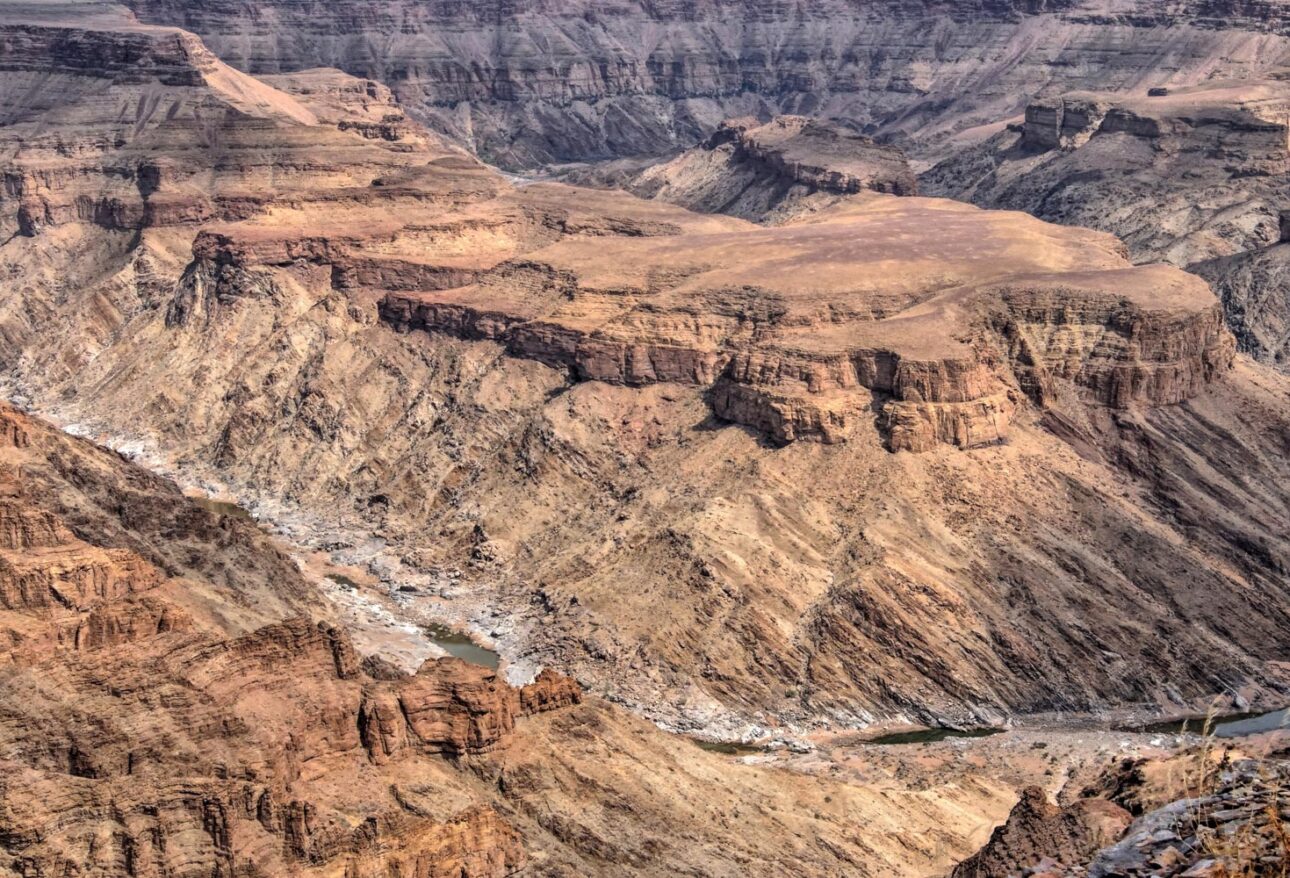[lwptoc depth=”1″ skipHeadingLevel=”h1,h3″]
Moves and changes worldwide outside, approximately 500 million years prior, brought about serious water disintegration and imploding valleys that left plunging gorges and approaching stone appearances afterward. Today, this region is known as the Fish River Canyon, one of Namibia’s (many) delegated wonders and the second-biggest gorge on the planet. The best sight in southern Namibia is the Fish River Canyon, a noteworthy snake-like ravine in the immense Namibian scene. Obviously, the Fish River Canyon is highly visited, not just touristy.
The most well-known perspective is that maybe somewhat swarmed in high season. However, in different spots, you will have the option to sit undisturbed on the edge of the gorge to assimilate the normal excellence in harmony and calm. Visiting the Fish River Canyon in Namibia is an absolute necessity to do insight. Your odds of seeing something like this in any other place are slim to none. Regardless of whether you’re experiencing the sheer scale and excellence of the spot from one of the posts or climbing for five days to drench yourself in its multifaceted appeal, Fish River Canyon is an uncommon spot.
Where is Fish River Canyon?
The fish River Canyon is in the south of Namibia in Africa. It’s like Africa’s response to the Grand Canyon in the USA. It’s the second biggest Canyon in the world, which takes notice from travelers worldwide. Today practically the entirety of the Canyon is safeguarded by Nature Reserves: In the South, where the most profound part is situated by the Ai-Ais/Richtersveld Transfrontier Park, in the North by private Nature Reserves, for example, the Canyon Nature Park or Vogelstrausskluft.

Geology of Fish River Canyon
Extending across 160km long, 27km in width, and profundities once in a while, arriving at 550m, the idea of the gully changes depending on what season you visit. The Fish River gorge comprises an upper gulch, where hard gneiss bedrocks repressed waterway disintegration, and a lower ravine shaped after disintegration had at last worn through the gneisses. The two sections were proclaimed a public landmark in 1962.
Upstream, the waterway goes through even dolomite layers; these transformative rocks framed pieces of the gulch. Around 650 million years back (Mya), plate development shaped a north-south graben or brought down region, along which the old Fish River could stream and, in the end, disintegrate a level plain, which is the present upper ravine.
Many years ago, during a historical glaciation, Africa was separated from South America. This separation was a key moment in shaping the canyon. The earth experienced a heavy glaciation during the Karoo ice age which is called Dyka glaciation. This glaciation has had a very important role in making the Fish River canyon. There were more than 300 rivers with a massive amount of frozen water in the riverbed that dry after many years and shaped this canyon.
Climate and the Best Time to Travel
The extraordinary atmosphere is regularly purposing behind the enduring impressions. It tends to be amazingly cold during winter evenings and, during mid-year days, incredibly sweltering. Furthermore, the locale is perhaps the nation’s driest district, described by cruel dry spells and low air mugginess.
The normal annual precipitation lies between 50 to 150 mm. Due to the climate changes and travelers’ notes the best time for being in Fish River canyon is from the middle of July to the end of December. However, the golden time for visiting the Canyon is from 1st May to 15th September.
How to Visit the Fish River Canyon
Your visit to the gulch will presumably begin at Hobas. There you purchase a license for 24 hours to visit the public park. You need to pay 80 Namibian dollars for every individual and 10 Namibian dollars for each vehicle, as common in Namibia. At Hobas, you’ll additionally locate a camp with outdoor pitches and hotels, yet we will disclose to you more about convenience choices later.
Our Tip: Go through the night in Hobas to appreciate the nightfall from one of the Fish River Canyon perspectives at night! From the door at Hobas, you travel around 10 kilometers to the fundamental perspective. It can become pretty busy in the high season. You have a view over the amazing Hell’s Bend from a tribune with even cookout regions and latrines! Data signs give data about the gully, the widely varied vegetation in the zone, and the native clans in this district.

Is It My Type?
The gully (and the country everywhere) is a famous hub for self-drive lovers, beginners, professional photography artists, outdoorsmen, nature sweethearts, and whoever rushes to the charming verge of the winding waterway. You can reach the gully’s mainstream and extensive perspectives neglecting the chasm by a quick 10km drive from the door at Hobas Campsite. A bunch of natural life can be found in the gully, from the Goliath heron and Nama padloper turtle to the panther, bat-eared fox, and mountain zebra. One of southern Africa’s most well-known climbing trails is in the gorge and is regularly finished over a time of 4-5 days.
Main Viewpoint
This perspective has presumably the best – and most captured – ravine standpoint, with sees that take in the sharp waterway twist known as Hell’s Corner. Even better, it’s available to everybody, not simply those climbing the full five-day gully trail.
Sulphur Springs
Sulfur Springs (all the more usually called Palm Springs) is a superb camping area with warm sulfur pools (a dash of heaven) to calm your hurting muscles. The springs, which have a consistent temperature of 55-58°C, ramble up from the concealed world at a dazzling 29L consistently and contain sulfur, yet next to chloride and fluoride.

Ai-Ais Hot Springs
The region around the southern piece of Fish River Canyon was announced as a preservation region in 1969. The land was as poor in the potential for agribusiness as it is wealthy in the potential for the travel industry, and this was a method of shielding the region from the uncontrolled turn of events. The natural aquifers at Ai-Ais are underneath the transcending tops at the southern finish of the Canyon. They’re wealthy in chloride, fluoride, and sulfur and are supposedly restorative for victims of ailment or anxiety problems. The high temp water is funneled into a progression of showers and spas just like an open-air pool.
Fish River Hiking Trail
Fish River Canyon hiking is one of the most well-known climbing trails globally. The massive scope and tough territory have drawn numerous guests from everywhere in the world to encounter what climbing or trail running the gorge can offer. Aside from the 2 kilometers plunge west of Hobas and some discretionary alternate routes, the path, for the most part, follows 88 kilometers of the Fish River through to Ai-Ais and is typically finished within five days.
Although there are various pathways through the gorge, the path isn’t fixed, leaving the climber to choose where and how long to climb. There are no conveniences on the path, and explorers need to convey every one of their requirements to them. The five-day climb from Hobas to Ai-Ais is Namibia’s most significant mainstream distance walk. The mysterious 85km course, which follows the sandy riverbed past a progression of vaporous pools, starts at Hikers’ Viewpoint and closes at the underground aquifer resort of Ai-Ais.
Fish River Hiking Trail Tips
- The Hobas camping area and convenience at Ai-Ais Hot Springs Spa should likewise be reserved ahead of time through Namibia Wildlife Resorts.
- Climbers should introduce a clinical testament of wellness from their PCP, legitimate within 40 days, and complete NWR’s reimbursement structure, preceding to begin the path.
- A decent degree of wellness is fundamental. Anticipate that seven should take eight hours of strolling every day.
- No offices are accessible on the way, and climbers should convey all fundamental hardware, clinical units, food, and water.
- There is no phone signal in the Fish River Canyon, regardless of whether you buy a nearby paid-ahead-of-time SIM card. They are just two crisis exits in the ravine that permits you to leave and find support.
Accommodation
If you think that there are no luxury villas or hotels there, you are completely wrong. Due to the countless tourists each year, you have many options for accommodation. You can choose luxury places or even typical hostels. The vast majority stay at Ai-Ais for a valid justification. Simulated intelligence Ais is more pleasant; green outdoors territory with trees for shadow, numerous latrines, and showers.
Canyon Village
Near Namibia’s Fish River Canyon, Canyon Village is situated at the base of various exposed rough slopes, or kopjes, in an immense rough scene. Although the hotel is present day, a customary vibe comes from a progression of alluring paintings that portray different scenes from when the Nama public used to possess the area. Canyon Village has an incredible area close to Fish River Canyon, permitting self-driving visitors to investigate the territory all alone. The hotel is regularly frequented by gatherings, yet don’t allow this to put you off as its neighborly help, pretty perspectives, and inviting staff makes it a decent spot to base yourself to investigate this territory of Namibia.
Fish River Lodge
Rest on the edge of endlessness in these stylish, moderate lodges directly alongside the Fish River Canyon. On the edge of the world’s second-biggest gulch, Fish River Lodge is moderate with a stylistic layout yet maximalist with sees. This distant cabin has an unmatched situation on the western edge of Fish River Canyon, with an excellent view across one of Namibia’s most awesome scenes. Fish River Lodge consists of twenty stone suites. Each room has a spectacular view and passengers can enjoy watching outside due to floor-to-roof windows. There is an exclusive open-air shower that is perfectly effective and necessary after having a hard hiking day. Each suite has an amazing veranda at the edge of the high cliff.
Canyon Lodge
Canyon Lodge lies in the 1,270km Gondwana Canyon Park, only 20km from Namibia’s notable Fish River Canyon. Concealed from the gully edge among dark red rock stones, or kopjes, the hotel’s lavish yards are a desert spring of green in this dry climate. Canyon Lodge is presumably our best option on the southern side of Fish River Canyon for most voyagers. The chalets are intended to fit among enormous stone rocks, and the cabin’s fundamental territory has a significantly comfortable farmhouse air.

Last Words
What makes the Fish so exceptional is that there is certifiable ballyhoo each time a gathering, or even a solitary explorer, completes the climb. Even if you are not a pro hiker, then no matter! Still, many sight-seen places are ready to explore to have a memorable trip. Believe the many reviews by previous travelers: that is completely worth seeing the second big Canyon in the world and spending some days in this historical Canyon.





